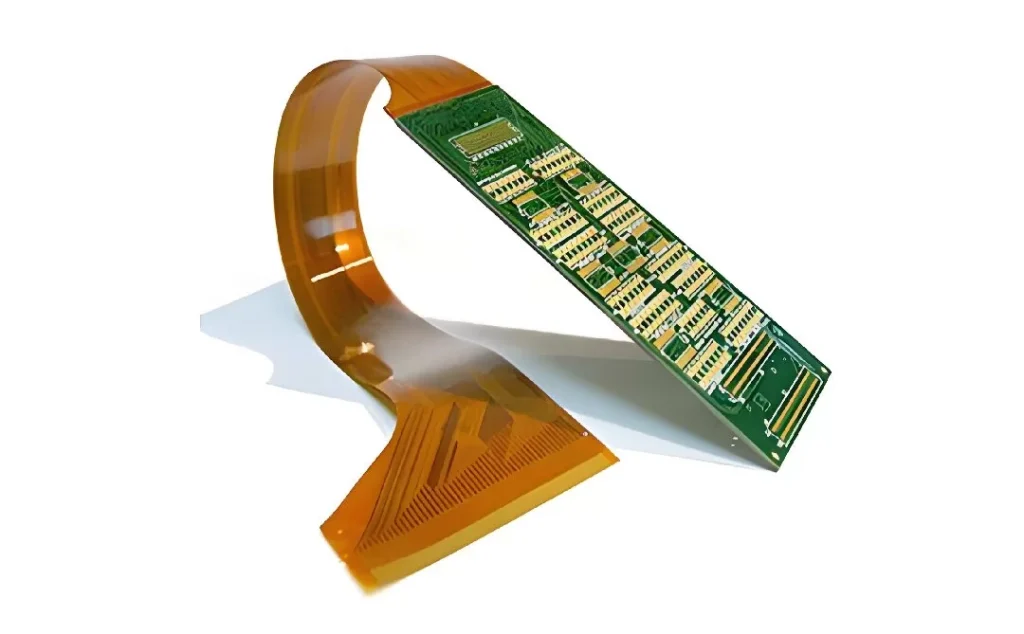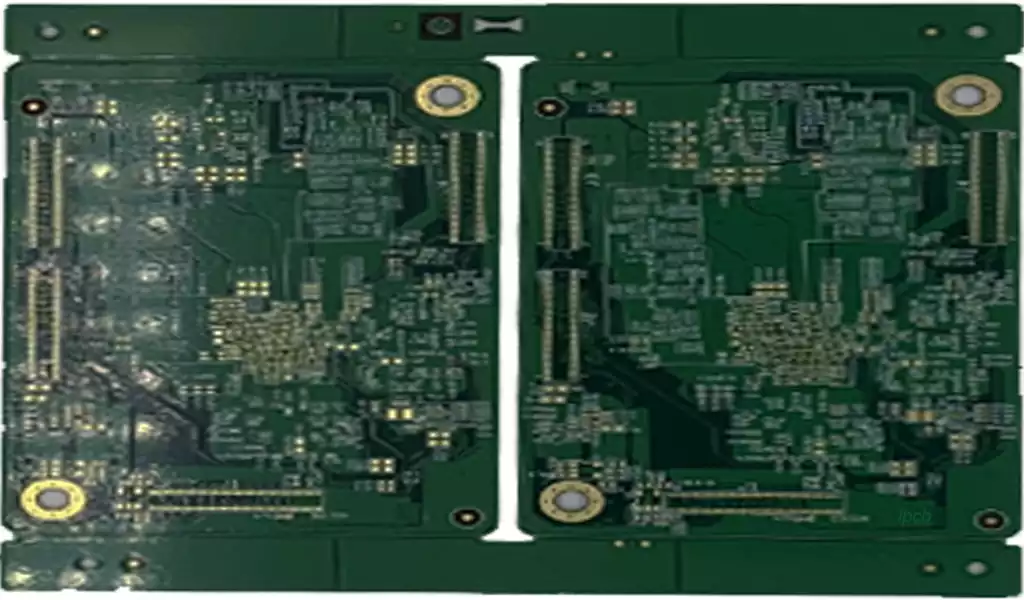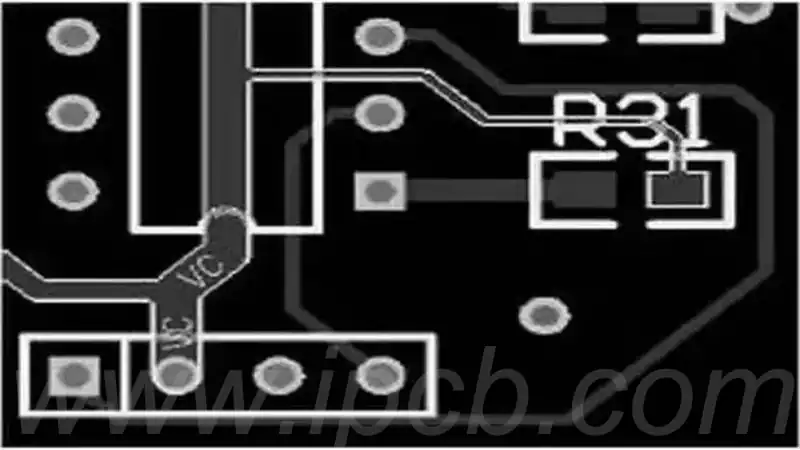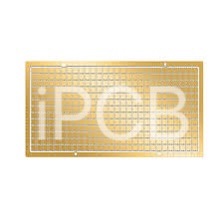Flexible substrates composed entirely of flexible materials rather than having a rigid part with a polyimide core surrounded by copper and prepreg. In order to enhance your understanding of flexible PCB, this article will introduce the common types of substrate materials for flexible PCB. If you are interested in flexible PCB, you may wish to continue to read down Oh.
Substrate:
The most important material in a flexible substrate or rigid PCB is its base substrate material. It is the material on which the entire PCB stands. In Rigid PCB, the substrate material is usually FR-4. However, in Flex PCB, the commonly used substrate materials are polyimide (PI) film and PET (polyester) film, in addition to polymer films such as PEN (polyethylene terephthalate), PTFE, and aramid.
Polyimide (PI) “thermoset resin” is still the most commonly used material for Flex PCBs. It has excellent tensile strength, is very stable over a wide operating temperature range of -200 O C to 300 O C, has chemical resistance, excellent electrical properties, high durability and excellent heat resistance. Unlike other thermoset resins, they retain their elasticity even after thermal polymerization. However, the disadvantages of PI resins are poor tear strength and high moisture absorption. PET (polyester) resins, on the other hand, have poor heat resistance, “making them unsuitable for direct soldering,” but have good electrical and mechanical properties. The other base material, PEN, has moderately better properties than PET, but not better than PI.

Liquid Crystal Polymer (LCP) Substrates:
LCP is a substrate material that is rapidly gaining popularity in Flex PCBs. This is because it overcomes the drawbacks of PI substrates while maintaining all of the properties of PI.LCP has 0.04% moisture resistance and humidity resistance, and a dielectric constant of 2.85 at 1 GHz.This makes it well known for high-speed digital circuits and high-frequency RF circuits.The molten form of LCP, known as TLCP, can be injection-molded and pressed into a Flex PCB substrate, and can be easily recycled.
Resin:
Another material is the resin that binds the copper foil and the flexible substrate material tightly together. Resins can be PI resins, PET resins, modified epoxy resins and acrylic resins. The resin, the copper foil (top and bottom) and the substrate form a sandwich called a “laminate”. These laminates are called FCCL (Flexible Copper Clad Laminate) and are formed by applying high temperatures and pressures to the “stack” through automated pressing in a controlled environment. Of the resin types mentioned, modified epoxy and acrylic resins have strong bonding properties.
These adhesive resins are detrimental to the electrical and thermal properties of Flex PCBs and reduce dimensional stability. These adhesives may also contain halogens that are harmful to the environment and are restricted by European Union (EU) regulations. Under these environmental protection regulations, the use of seven hazardous substances is restricted, among them lead (Pb), mercury (Hg), cadmium (Cd), hexavalent chromium (Cr 6+), polybrominated biphenyls (PBB), polybrominated diphenyl ethers (PBDEs) ), bis(2-ethylhexyl) phthalate (DEHP), and butylbenzyl phthalate (BBP).
Therefore, the solution to this problem is to use 2-layer FCCL without adhesive. 2L FCCL has good electrical properties, high heat resistance and good dimensional stability, but it is difficult and costly to manufacture.
Copper Foil:
Another top material in flexible PCB is copper. pcb alignments, traces, pads, vias and holes are filled with copper as a conductive material. We all know the conductive properties of copper, but how to print these copper traces on the PCB is still the subject of discussion. There are two methods of copper deposition on 2L-FCCL (2-layer flexible copper-clad laminate) substrates. 1-plating and 2-laminating. The plating method has less binder while the laminates contain binder.
Electroplating:
The conventional method of laminating copper foils on PI substrates by resin adhesive is not suitable where ultra-thin Flex PCBs are required. This is due to the fact that the lamination process has a 3-layer structure, i.e. (Cu-Adhesive-PI) which results in a thicker stack, and is therefore not recommended for double-sided FCCLs. Therefore, an alternative method called “sputtering” is used, whereby the copper foil is plated by “electroless” plating. Copper is sputtered onto the PI layer either wet or dry. This chemical plating deposits a very thin layer of copper (seed layer), while another layer of copper is deposited in the next step called “electroplating”, where a thicker layer of copper is deposited on top of a thin layer of copper (seed layer). This method creates a strong bond between the PI and the copper without the use of resin adhesives.
Lamination:
In this method, the PI substrate is laminated to an ultra-thin copper foil by means of a coverlay.Coverlay is a composite film in which a thermosetting epoxy adhesive is coated onto a polyimide film. This coverlay adhesive has excellent heat resistance and is a good electrical insulator with bending, flame retardant and gap filling properties. A special type of coverlay is called “ Photo Imageable Coverlay (PIC)” which has excellent adhesion, good flex resistance and is environmentally friendly. However, the disadvantages of PIC are poor heat resistance, low glass transition temperature (Tg)
Rolled annealed (RA) vs. electrodeposited (ED) copper foils:
The main difference between the two is the manufacturing process.ED copper foils are made by electrolysis from a CuSO4 solution, in which Cu2 + is immersed in a rotating cathode roll and stripped to make ED copper. And RA copper of different thicknesses is made from high purity copper (> 99.98%) by a pressurized process.
Electrodeposited (ED) copper has better conductivity than roll annealed (RA) copper, while RA has much better ductility than ED. For Flex PCBs, RA is the better choice as far as flexibility is concerned, while ED is the better choice for conductivity.
Above is Mia’s simple understanding of Flex PCB, hope it is useful to you.


